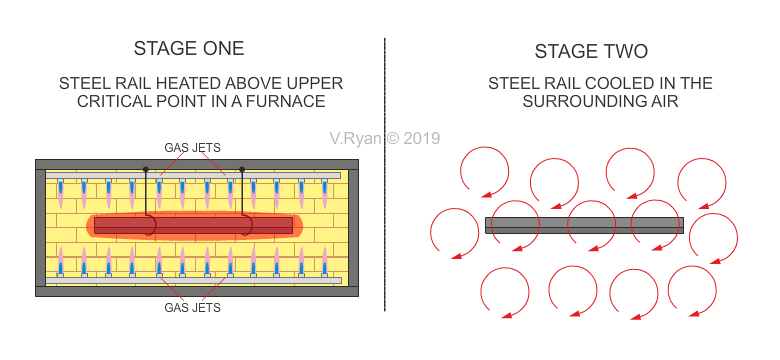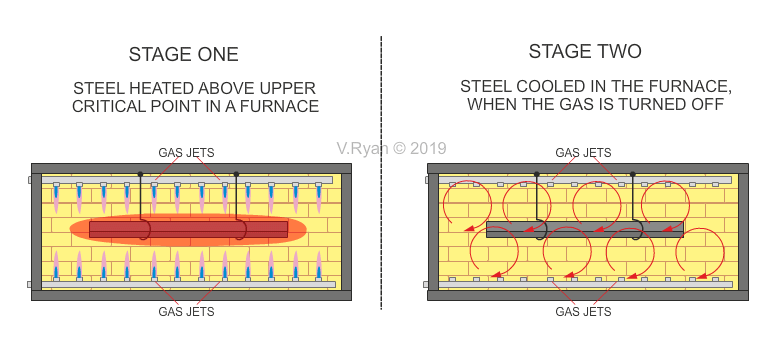| CLICK HERE FOR INDEX PAGE |
| |
| HEAT TREATMENT OF STEEL |
V.Ryan © 2019 |
| |
| PDF FILE - CLICK HERE FOR PRINTABLE WORKSHEET |
| |
| What is the Critical Point and Critical Range of metals? |
When metals are heated, they eventually reach a temperature, when their crystalline structure begins to change. The Lower Critical Point is when the change in crystalline structure starts and the Upper Critical Point, is when the change in structure ends. The alteration in crystalline structure can be quite complex and leads to changes in the metals physical properties, such as toughness, durability, tensile strength and consequently, affects the metals working properties. |
| |
|
|
| |
| NORMALISING |
| Normalising, is a process whereby the hot steel (heated above its upper critical point), is taken from the furnace and allowed to cool in the surrounding air. This allows the crystalline structure of the steel to return to a ‘homogeneous structure’, which means a ‘uniform fine structure’. The resulting steel is tough, but with a measure of ductility. This is often a desirable property. See the example of normalising below. |
| |
 |
| |
|
|
| |
| ANNEALING |
| Annealing of steel, is a process whereby the metal is heated to a high temperature, NOT above its upper critical point, and allowed to cool slowly, in the furnace. The slowly cooling effect, is a key characteristic of this process. The crystalline structure of the steel is coarse, unlike the fine structure of normalised steel. This results in a ‘soft’ steel, so that it is easier to work, form and shape. See the example of annealing below. |
| |
 |
| |
|
|
| |
| CLICK HERE FOR EQUIPMENT AND PROCESSES INDEX PAGE |
| |
|
| |
|

